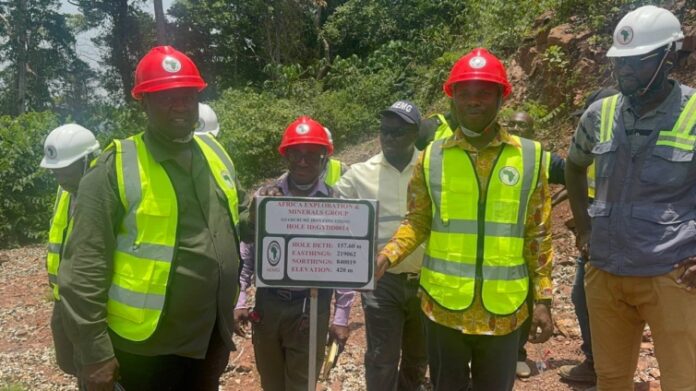Exploration for iron ore in Ghana’s Oti Region is showing strong potential, with early data suggesting the deposits could be commercially viable — and possibly rank among the best in West Africa.
This discovery could significantly boost Ghana’s mineral resource base and lay the groundwork for a domestic iron and steel industry.
Driven by rising global demand — projected to increase by 3% annually due to growth in construction and manufacturing — the search for iron ore is being spearheaded by the Ghana Integrated Iron and Steel Development Corporation (GIISDEC) and its technical partner, Africa Exploration and Minerals Group (AEMG).
The exploration, which began in 2020, has been concentrated in the Gyamurume area within the Kadjebi District.
Initial findings have been encouraging, with GIISDEC reporting the discovery of oxidised iron ore showing iron oxide concentrations as high as 82%, which translates to approximately 57% iron. On average, samples contain 67% iron oxide, or about 47% iron content.
“These are just preliminary figures, but the signs are very promising,” said William Okofu Darteh, Chief Executive Officer of GIISDEC. “While we still need laboratory confirmation, the quality appears to be very competitive — even better than some deposits being mined elsewhere in Africa,” he added.
These promising results have already attracted the interest of potential investors, though GIISDEC remains focused on completing its data collection before entering negotiations.
“We are not rushing into anything. Accuracy and completeness are our priorities,” Mr. Darteh emphasized.
So far, the exploration process has included remote sensing and geophysical surveys. From an initial 54 targets, AEMG has narrowed the focus to 11 key drilling zones. Drilling began in mid-2024, and eight of the planned 30 drill holes have already been completed.
The full program covers 15 drill lines, stretching over approximately 2,500 metres, with completion expected by June 2025. A detailed resource estimate is scheduled for September 2025.
Franklin Mace, Chief Geologist at AEMG, noted that drilling has consistently intersected banded iron formations averaging 30 metres in width. Interestingly, serpentinite rocks — potential indicators of nickel — have also been found, adding unexpected value to the project.
Geological mapping has so far identified 42,000 square metres of fully oxidised ironstone and 36,000 square metres of partially oxidised deposits, stretching across an 8-kilometre belt dipping steeply eastward. Fault zones in the rock formations may ease access to the ore.
More than 100 rock samples tested by Intertek Laboratory and the University of Ghana confirm high iron content, though drilling is necessary to verify depth and continuity.
“It’s visible on the surface, but we need to confirm what lies beneath,” explained Prof. Frank Nyame, a University of Ghana lecturer and technical advisor to the project.
Once the resource estimate is complete, GIISDEC aims to leverage the data to attract investment and develop a full iron and steel production value chain. The project is expected to diversify Ghana’s economy and reduce dependence on gold and cocoa exports.
“This could be a transformative project,” Mr. Darteh stated. “By the end of September 2025, we should know the full potential, and then we can take the next big steps.”

Ghana currently holds an estimated 1.7 billion tonnes of iron ore reserves, including the Shieni deposit (1.3 billion tonnes at 33.8% Fe) and the Opon-Mansi deposit (147 million tonnes at 52.5% Fe). A US$600 million mining operation at Shieni is scheduled to begin in late 2025, with the goal of cutting down annual steel imports, which are valued at around US$900 million. The broader national strategy targets domestic iron ore processing by 2027, focusing on value addition and job creation.
Community engagement remains a key pillar of the exploration.
Osaberima Osei-Bonsu V, Paramount Chief of the Asato Traditional Area, welcomed the development, noting the structured nature of the project compared to illegal mining activities.
“We are hopeful that our people will benefit through employment and other opportunities,” he said.
Despite the region’s logistical challenges, GIISDEC continues to push forward with help from the Ghana Geological Survey Authority, consulting firm SRK, and local contractor BobJosh Drilling Company, which has supplied portable rigs suited to the area’s difficult terrain.
“We recognize the obstacles — especially with access and transport — but we’re addressing them as they arise,” Mr. Darteh concluded.
If successful, the project could become a key pillar of Ghana’s future industrial landscape.
ALSO READ:

